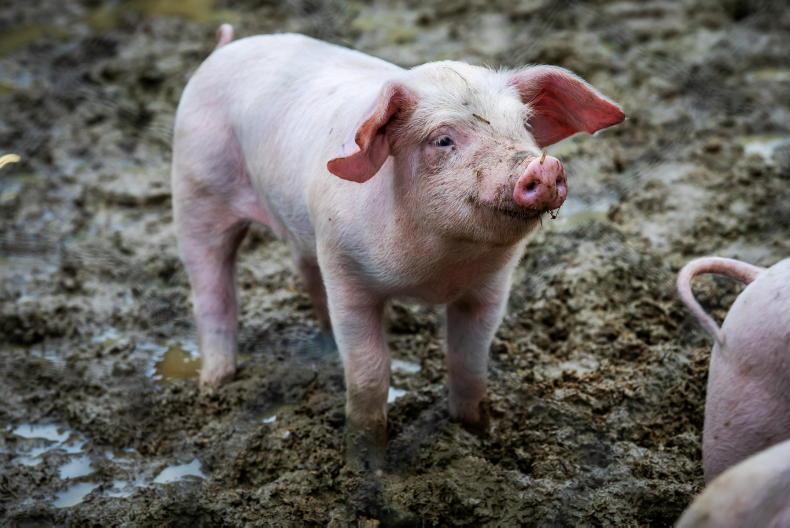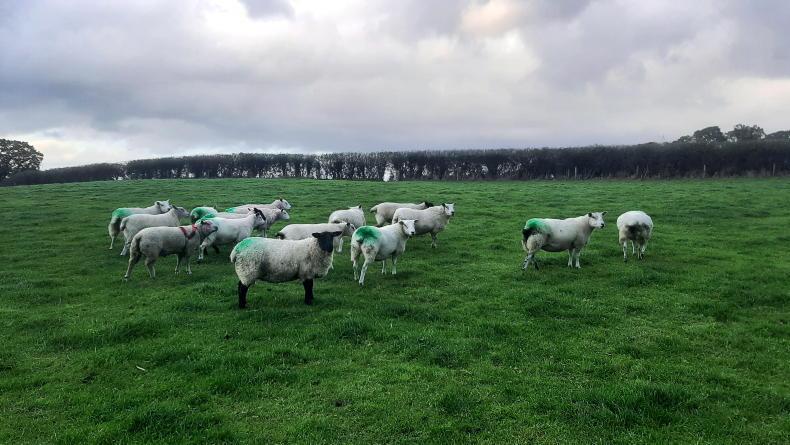The Irish pig sector is used to volatility and price fluctuations from year to year but even for seasoned pig producers, the last 14 months have been some of the most difficult in living memory.
It began with rising feed prices from August 2021. Then producers experienced challenges in getting pigs slaughtered due to logistical problems seen across Northern Ireland.
Feed prices hit historic highs during the prices spike after Russia’s invasion of Ukraine.
Just when producers were getting acclimatised to the new stratospheric feed cost norm, energy prices escalated by 200% to 300% on the back of Russia restricting gas exports to the EU. Once in a lifetime is definitely enough to be experiencing the severe trepidations of the past year.
Outlined below is an attempt to quantify and frame this year’s volatility against the 30-year financial database that the Teagasc pig development department has accumulated and then suggest strategies to mitigate the risk of future volatility.
Importing ingredients
The problem started for Irish and European pig producers with rising feed ingredient costs.
Feed constitutes 70% to 75% of the cost of producing a pig depending on relative feed ingredient prices, therefore an escalation of feed ingredient costs will have a significant effect on pig production costs and profitability.
The Irish pig sector imports virtually all of its protein feed source (soya beans) and approximately 60% (500,000 tonnes) of its cereal requirements. Therefore, it is very exposed to the volatility of the international feed ingredient market.
Since the 2020 harvest, feed ingredient costs had been increasing gradually, initially due to a poor wheat harvest in the US and France, and then by poor maize harvests.
The Ukraine war subsequently shocked the market with resultant feed ingredient prices spiking to historic highs.
Rising volatility
An analysis of the pig sector data over recent years highlights an increasing level of volatility in input costs and pig price with a resultant increase in profitability volatility.
Traditionally, in the 1970s and 1980s, pig producers would use feed credit to absorb this volatility.
However, in more recent years, this practice has diminished as pig units got larger and the financial risk to the feed mill became greater. Teagasc has previously advocated maintaining one month’s feed credit as a cashflow reserve but the volatility of recent years demonstrates that this is no longer sufficient.
So, what options/tools could be utilised by the Irish pig sector to reduce these annual fluctuations/volatility and maintain a more determinable income?
Tools to reduce volatility
A number of tools which could reduce volatility are outlined below. Some of these tools would require legislative or tax changes, others EU approval, and some simply require getting the requisite sector stakeholders aligned to a common purpose of reducing sector volatility.
Margin over feed contracts
In a margin over feed contract (MOFC) scenario, pig price would be based on the average feed price plus a premium to cover all non-feed costs and profit. The pig price would rise with any increases in feed prices thereby negating the volatility of the biggest input cost, namely feed.
This would give greater stability to producers to forecast their incomes and also incentivise them to perform better as greater efficiencies would reduce their non-feed costs and therefore allow them to keep a bigger share of the premium as profit.
From the pig processor’s view, the MOFC gives them greater certainty of supply as the pig supply is contracted rather than on the current system of weekly spot price supply.
In this scenario, the processor would offlay the risk of feed price increases and therefore higher input costs by hedging the feed price. If feed prices rise, higher pigmeat costs are offset by selling the feed position.
This system is used commonly in some other European countries and North America but is rarely used here.
Hedging
The pig producer would hedge feed ingredients to insulate against sudden feed prices.
This would be particularly attractive to home-millers but would also apply to composite feed purchasers, as ultimately the volatility in feed ingredients would be passed on by the mills to the end user/pig producer.
If feed ingredient prices rise, then the producer gains by selling their position
The timespan for hedging could be months or even years in certain situations.
If feed ingredient prices rise, then the producer gains by selling their position.
If feed prices remain unchanged, the producer sells their position to no gain other than price certainty and peace of mind.
Crop or revenue insurance
This system has been in operation in the US for over 50 years. Federal states provide an insurance policy to reduce the risk of the crop farmer by reimbursing them for a loss if it occurs.
Originally, it was based on the yield of the crop but in recent years it has been based off the revenue of the crop to better allow for price fluctuations.
There are different options for the amount of the harvest or revenue that one can insure and the insurance is higher in areas where the risk is higher.
Insurance is not available in some very high-risk areas, for example if an area is regularly prone to severe drought.
As the system is backed by the federal government and operates as a not-for-profit venture, the premiums are relatively modest and it allows producers to financially forecast/plan with greater certainty.
An Irish system to insure pig revenue would be more complicated than a programme for crop yields and presumably would have to pass EU authorisation.
If producers paid a statutory levy on a per pig sold, an emergency fund would accumulate over time to be withdrawn during periods of negative profitability.
Periods of low profitability could be determined by independent analysis, for example by Teagasc.
The fund would be based on the number of pigs sold per producer. The sum available for withdrawal would also be determined on a pro-rata basis. Pig producers would pay into the fund during high profitability and would help negate the need to seek credit used during downturns.
However, there are limitations on the possibility of such a funding mechanism becoming reality. If the rainy-day fund is needed to fund the full losses of farmers every four years, the size of the required levy would be substantial.
If the rainy-day fund took the form of one and a quarter month’s feed credit, then the levy would amount to €2.43/pig – equivalent to 2.7c/kg deadweight.
To make the system manageable, a statutory levy would also be required. Some pig producers may not agree to a statutory levy for this purpose.
The rise in international feed ingredients obviously increased the Irish composite pig feed price. The rate of increase from €301 in December 2019 to €476 in December 2022 (forecast) is a rise of 58%, with the majority of this rise (62% of total) occurring from October 2021 to July 2022.
The pig producer’s feed credit days only rose marginally during this period, with an estimated increase of 14 to 21 days, to give an estimated total average credit days of 105 days per pig unit.
However, the total feed credit per average 600-sow pig unit has increased by an estimated €300,000 in cash terms.
Similarly, the total feed credit extended by the five principal pig feed mills to the pig sector has increased from an estimated €76m in 2020 to €119m in 2022.
When the 2022 feed cost is compared to previous historic high cost periods, we see that we have reached a historic high of 156c/kg deadweight, with 2013 being the previous highest feed cost at 132c/kg.
The rapid spike in feed cost and the lag in pig price movement has resulted in Irish pig producers suffering unprecedented losses.
Irish pig producers are entering their 14th month of consecutive losses, albeit the size of the monthly loss has decreased to €10,108 when compared to earlier in the year.
For producers to reach profitability will require a drop in feed cost or an increase in the pig price.
The latter appears the more likely as the supply of slaughter pigs declines due to the contraction of the EU sow herd.
In Ireland, the national sow herd has contracted by an estimated 12,000 sows (145,000 to 133,000) which will result in a reduction of 6,500 slaughter pigs per week from early 2023.
Across the EU, the sow herd reduction is conservatively estimated to be at least 550,000 sows, which would equate approximately to a 6% reduction in the total EU herd.
The last 12 months have been and remain the most difficult experienced in the pig sector in living memory. The sector has experienced higher levels of volatility in recent years, which places greater strain on the cashflow of producers. The sector needs to address how this volatility can be reduced if the sector wants to grow in the future.
The sector must have a discussion on what the most feasible way to address this issue is, as any fund or system will take a number of years to bed in and to build up sufficient funding in preparation for the next financial challenge.










SHARING OPTIONS